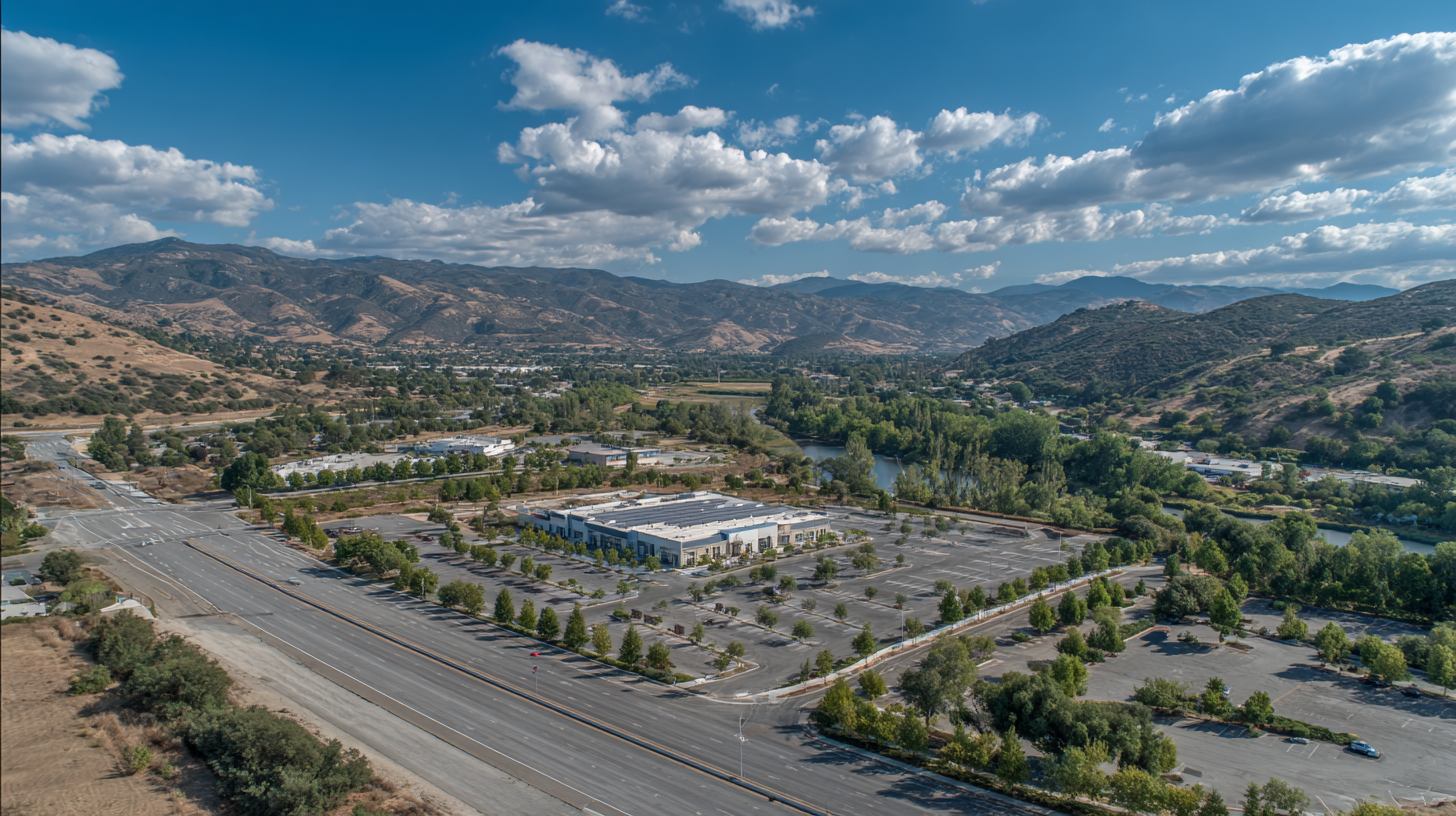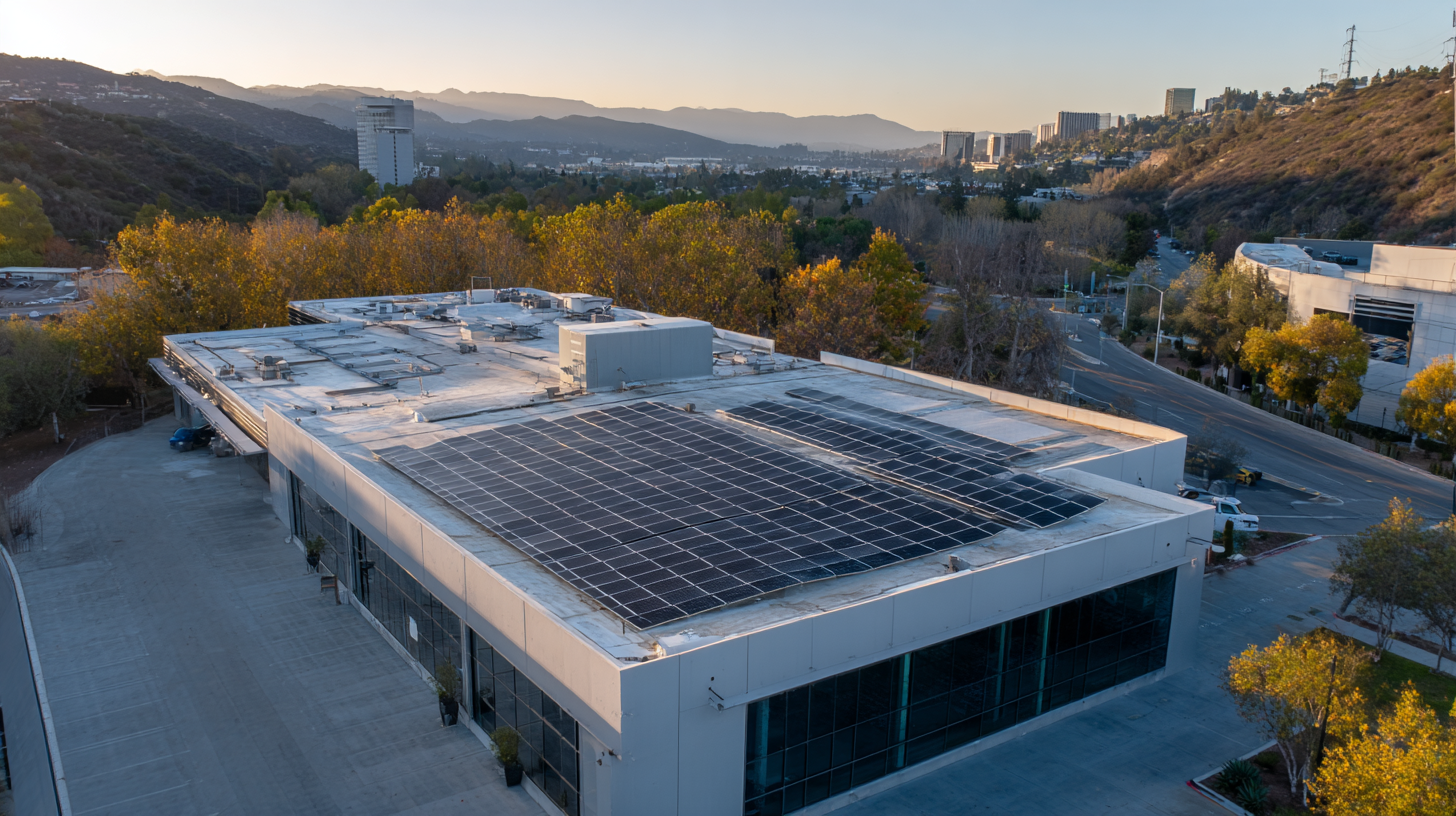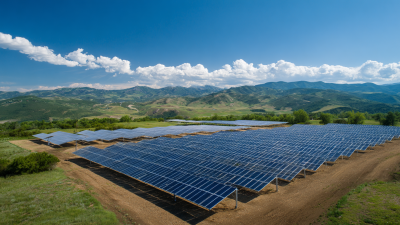Unlocking the Power of Solar Commercial Solutions: A Guide to Sustainable Business Growth
The increasing adoption of solar commercial solutions marks a pivotal shift towards sustainable business practices, with recent studies indicating that the global solar market is expected to reach $223.3 billion by 2026, growing at a CAGR of 20.5% from 2019 to 2026. As companies face rising energy costs and the urgent need for carbon reduction, integrating solar commercial systems not only mitigates these expenses but also enhances corporate social responsibility. A report by the International Energy Agency highlights that solar power could account for over 25% of global electricity generation by 2050, showcasing its potential as a cornerstone for future-proofing businesses. Additionally, a survey conducted by the Solar Energy Industries Association reveals that businesses deploying solar solutions can save up to 75% on their energy bills, making it an economically viable strategy for sustainable growth. This guide aims to unlock the full potential of solar commercial investments, enabling businesses to thrive in an increasingly environmentally conscious market.

Exploring Solar Commercial Solutions for Enhanced Sustainability
In recent years, businesses have increasingly turned to solar commercial solutions as a means to enhance sustainability and reduce operational costs. According to the Solar Energy Industries Association (SEIA), commercial solar installations in the United States reached an impressive total capacity of over 20 gigawatts by the end of 2022, reflecting a 19% growth from the previous year. This shift not only contributes to environmental preservation but also represents a significant economic opportunity for companies aiming to improve their bottom line.
Moreover, incorporating solar energy into business operations can lead to substantial savings on electricity bills. A report from the National Renewable Energy Laboratory (NREL) indicates that businesses can save between 20% to 40% on their energy costs by adopting solar solutions. Such financial incentives, combined with the ability to enhance brand reputation through sustainable practices, make solar energy an attractive option for forward-thinking companies. Beyond the immediate economic advantages, embracing solar technology aligns with global sustainability goals, providing businesses with a competitive edge in an increasingly eco-conscious market.
Key Benefits of Solar Energy for Business Growth and Cost Reduction
Solar energy presents a transformative opportunity for businesses seeking to enhance growth while simultaneously reducing operational costs. According to a report by the Solar Energy Industries Association (SEIA), commercial solar installations grew by over 15% in 2022, showcasing a robust trend among businesses capitalizing on solar technology. By harnessing solar energy, companies can significantly decrease their electricity bills; businesses typically save an average of 75% on energy costs by switching to solar. This substantial reduction is primarily due to lower utility rates and the availability of various financial incentives, such as federal tax credits and state rebates.
Moreover, investing in solar solutions not only lowers energy expenses but also enhances a company's sustainability credentials. A study by McKinsey & Company indicates that 70% of consumers are willing to pay a premium for brands that demonstrate a commitment to sustainable practices. By adopting solar energy, businesses can attract eco-conscious customers and differentiate themselves in a competitive market. Furthermore, according to a report released by the International Renewable Energy Agency (IRENA), companies that implement renewable energy strategies can potentially see an increase in their market share by up to 5%, illustrating that solar energy is not just an environmental choice but a strategic business decision.

Tips for Assessing Your Business’s Solar Potential and Needs
 As businesses increasingly seek sustainable solutions for growth, assessing solar potential becomes crucial. According to recent industry reports, commercial solar installations have shown a steady increase, driven by rising energy prices and a greater emphasis on environmental responsibility. Companies adopting solar solutions can see significant reductions in energy costs, contributing to their bottom line while also aligning with green financing trends that prioritize environmentally sustainable projects.
As businesses increasingly seek sustainable solutions for growth, assessing solar potential becomes crucial. According to recent industry reports, commercial solar installations have shown a steady increase, driven by rising energy prices and a greater emphasis on environmental responsibility. Companies adopting solar solutions can see significant reductions in energy costs, contributing to their bottom line while also aligning with green financing trends that prioritize environmentally sustainable projects.
Tips for Assessing Your Business’s Solar Potential and Needs: First, evaluate your energy consumption patterns to determine how much solar energy you would realistically need. This data can be crucial in calculating potential savings and return on investment. Second, consider the physical attributes of your business location—roof size, orientation, and shading factors play an essential role in maximizing solar efficiency. Finally, engage with credible solar consultants to conduct thorough feasibility studies, which may reveal additional financial incentives, such as tax credits or grants, that can make solar investments even more attractive.
By focusing on these areas, businesses can effectively unlock the power of solar commercial solutions, facilitating sustainable growth and contributing to broader economic benefits, as seen in various markets around the world.
Steps to Implementing Solar Solutions in Your Commercial Operations
Implementing solar solutions in commercial operations begins with a thorough assessment of energy needs and potential solar production. Businesses should analyze their current energy consumption patterns and identify peak usage times. This data will inform the size and type of solar system suitable for their operations. Collaborating with a reputable solar provider can offer valuable insights into the most effective technology, such as photovoltaic panels or solar thermal systems, tailored to their specific requirements.
Once the optimal system is selected, the next step involves securing necessary permits and incentives. Understanding local regulations and available financial incentives is crucial, as these can significantly impact the overall investment and return on investment. Many regions offer tax credits or rebates for businesses adopting renewable energy solutions, making the transition more economically viable.
Finally, establishing a clear timeline for installation and maintenance guidelines will ensure seamless integration into existing operations, promoting sustainability while enhancing operational efficiency.
Long-Term Maintenance Strategies for Optimal Solar System Performance
Long-term maintenance is crucial for optimizing the performance of solar commercial solutions. Research from the National Renewable Energy Laboratory (NREL) indicates that regular maintenance can enhance solar panel efficiency by up to 30%. This efficiency boost can significantly contribute to reducing operational costs and accelerating return on investment for businesses. Incorporating a structured maintenance schedule not only prolongs the lifespan of solar systems but also ensures that they operate at peak performance, maximizing energy production and savings.
**Tips:** To maintain optimal performance, consider scheduling quarterly inspections with a qualified technician. They can identify issues such as dirt accumulation or shading that may hinder efficiency. Additionally, investing in remote monitoring technology can provide real-time performance data, enabling quick interventions to resolve any potential issues before they escalate.
Moreover, cleaning solar panels should not be overlooked; according to a report by Solar Energy Industries Association (SEIA), dirty panels can lose up to 20% efficiency. Implementing regular cleaning protocols, especially in dusty environments, is vital. Use soft brushes and non-abrasive materials to prevent damage, ensuring your system remains productive and sustainable over time.
Unlocking the Power of Solar Commercial Solutions
This chart illustrates the impact of long-term maintenance strategies on solar system performance across different businesses.
Related Posts
-

Unlocking the Specifications of the Best Solar Solutions for Global Buyers
-

Harnessing 2025 Trends in Solar Technology to Choose the Best Solar Panels for Your Energy Needs
-

7 Surprising Reasons Why Solar Solutions Are the Key to Your Energy Future
-

10 Proven Tips to Maximize Solar Potential for Your Business
-

How to Choose the Best Solar Solutions for Your Business Needs
-

10 Essential Tips to Maximize Your Solar Projects Success
